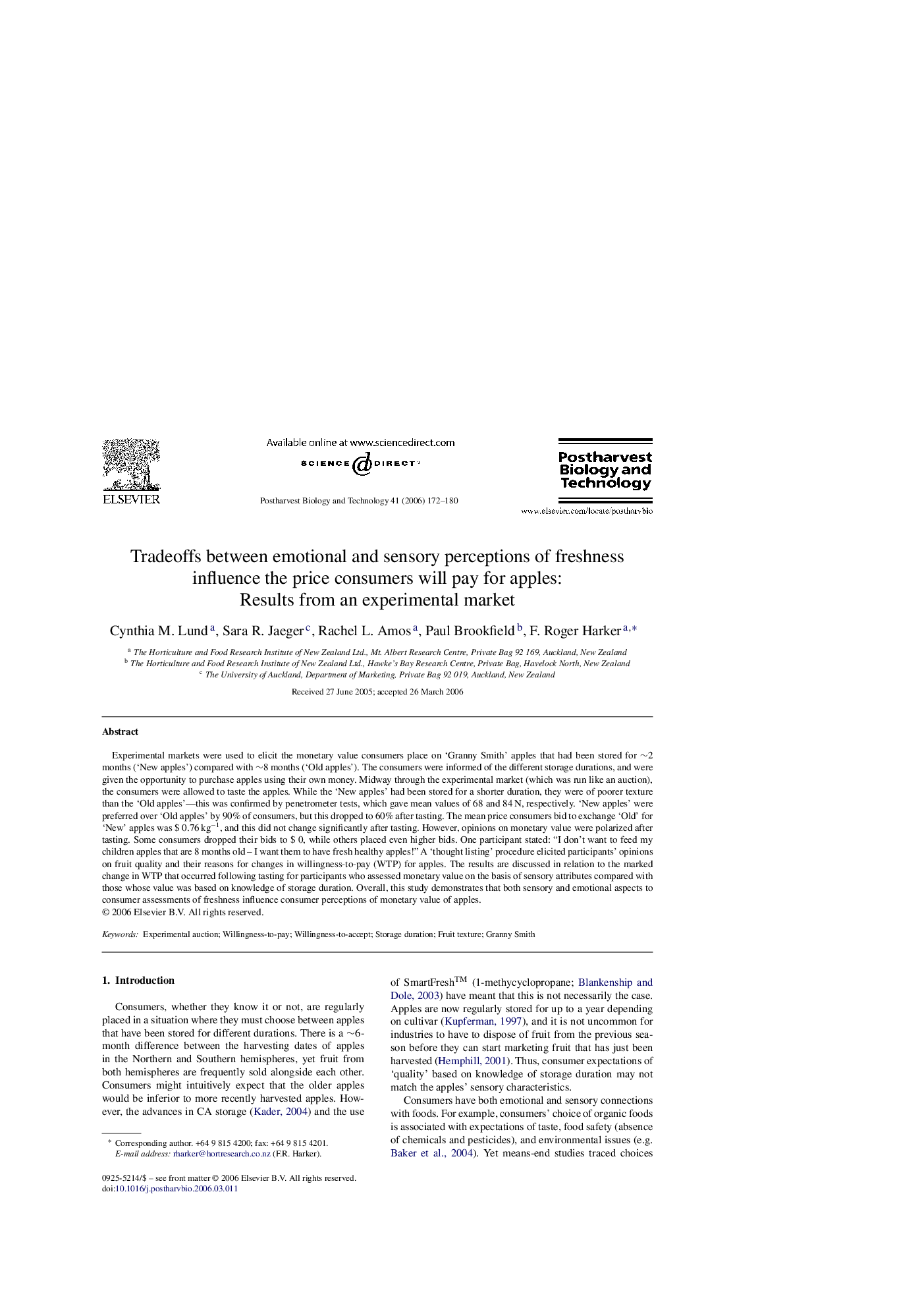| Article ID | Journal | Published Year | Pages | File Type |
|---|---|---|---|---|
| 4519604 | Postharvest Biology and Technology | 2006 | 9 Pages |
Experimental markets were used to elicit the monetary value consumers place on ‘Granny Smith’ apples that had been stored for ∼2 months (‘New apples’) compared with ∼8 months (‘Old apples’). The consumers were informed of the different storage durations, and were given the opportunity to purchase apples using their own money. Midway through the experimental market (which was run like an auction), the consumers were allowed to taste the apples. While the ‘New apples’ had been stored for a shorter duration, they were of poorer texture than the ‘Old apples’—this was confirmed by penetrometer tests, which gave mean values of 68 and 84 N, respectively. ‘New apples’ were preferred over ‘Old apples’ by 90% of consumers, but this dropped to 60% after tasting. The mean price consumers bid to exchange ‘Old’ for ‘New’ apples was $ 0.76 kg−1, and this did not change significantly after tasting. However, opinions on monetary value were polarized after tasting. Some consumers dropped their bids to $ 0, while others placed even higher bids. One participant stated: “I don’t want to feed my children apples that are 8 months old – I want them to have fresh healthy apples!” A ‘thought listing’ procedure elicited participants’ opinions on fruit quality and their reasons for changes in willingness-to-pay (WTP) for apples. The results are discussed in relation to the marked change in WTP that occurred following tasting for participants who assessed monetary value on the basis of sensory attributes compared with those whose value was based on knowledge of storage duration. Overall, this study demonstrates that both sensory and emotional aspects to consumer assessments of freshness influence consumer perceptions of monetary value of apples.
